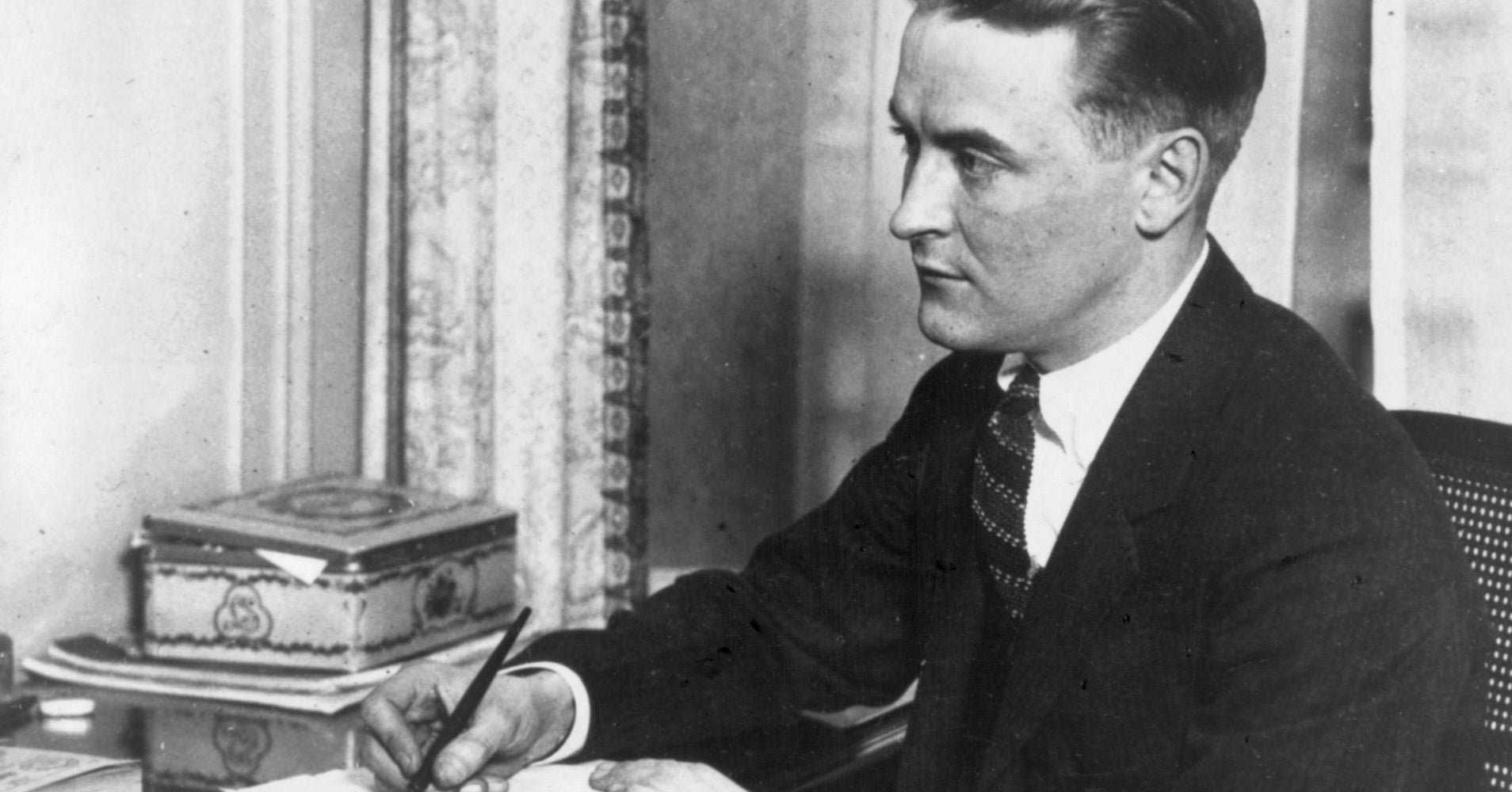Exploring The Real-Life Influences On F. Scott Fitzgerald's The Great Gatsby

Table of Contents
Fitzgerald's Personal Life and Gatsby's Character
The real-life influences on The Great Gatsby are deeply intertwined with Fitzgerald's own life, particularly his tempestuous relationship with Zelda Sayre. This connection provides crucial insight into the novel's core themes.
The Influence of Fitzgerald's Own Romantic Life
Fitzgerald's tumultuous relationship with Zelda Sayre serves as a powerful blueprint for the tragic romance between Gatsby and Daisy. Their courtship, a whirlwind of social ambition and passionate longing, mirrors Gatsby's relentless pursuit of Daisy. Zelda's social status and Fitzgerald's striving for literary success parallel the class differences and aspirations that fuel the narrative.
- Zelda's Social Status: Zelda's aristocratic background and Fitzgerald's relatively humble origins created a significant obstacle in their relationship, a dynamic echoed in Gatsby and Daisy's vastly different social standings.
- Fitzgerald's Ambition: Fitzgerald's relentless ambition to achieve both financial success and literary acclaim mirrors Gatsby's determination to win back Daisy, accumulating wealth as a means to an end.
- Courtship and Marriage Struggles: The initial struggles and eventual marital difficulties of Fitzgerald and Zelda find their counterpart in the complexities of Gatsby and Daisy's relationship, highlighting the challenges of love and the limitations of social expectations.
The themes of love, loss, and the relentless pursuit of an unattainable ideal resonate strongly in both Fitzgerald's life and Gatsby's story. Specific incidents from Fitzgerald's life, such as his struggles with alcoholism and his attempts to recapture a lost past, likely informed specific scenes and character traits within the novel.
Fitzgerald's Social Circle and the Roaring Twenties
Fitzgerald's close association with the wealthy and influential figures of the Jazz Age profoundly impacted the novel's depiction of extravagant parties and high society. His immersion in this world of excess and moral ambiguity provided rich material for his writing.
- Influence of Wealthy Patrons: The lavish lifestyles of Fitzgerald's acquaintances, many of whom were patrons of the arts, likely informed the descriptions of Gatsby's opulent parties and the extravagant displays of wealth throughout the novel.
- Descriptions of Lavish Parties: The vibrant descriptions of Gatsby's parties are not mere flights of fancy but rather a reflection of the lavish social gatherings Fitzgerald witnessed firsthand.
- Moral Ambiguities of the Era: The novel's portrayal of wealth, excess, and moral decay is a direct reflection of the societal atmosphere of the Roaring Twenties, an era marked by both unprecedented prosperity and significant social upheaval.
The real-life influences on The Great Gatsby extend to the characters themselves. While not direct copies of specific individuals, many characters are believed to have been inspired by people Fitzgerald knew, their personalities and actions informed by his real-life observations.
Geographical Influences and the Setting of West Egg
The geographical setting of The Great Gatsby is another significant real-life influence. Fitzgerald's experiences on Long Island played a crucial role in shaping the novel's landscape and symbolic geography.
Long Island and the Creation of West Egg
Long Island's unique landscape and social dynamics served as the inspiration for the fictional settings of West Egg and East Egg. Fitzgerald’s firsthand knowledge of the area, particularly its distinct social strata and geographical features, is evident in the novel's descriptive passages.
- Specific Long Island Locations: Many scholars have identified specific Long Island locations that served as inspiration for the novel's settings, contributing to the authenticity and realism of the descriptions.
- Descriptions of Mansions and Landscapes: The detailed descriptions of mansions and landscapes reflect Fitzgerald's keen observation of the Long Island setting and its distinct features.
- Symbolic Meaning of Geography: The contrasting geographical positions of West Egg and East Egg, representing "new money" and "old money" respectively, are deeply symbolic and central to the novel's themes of social class and aspiration.
The Reality Behind the Idealized Setting
While The Great Gatsby presents an idealized vision of Long Island, it also reflects the stark realities of class divisions and social inequalities prevalent during the Jazz Age.
- Contrasting Depictions of Wealth: The novel juxtaposes the ostentatious wealth of the elite with the struggles of those less fortunate, providing a nuanced portrayal of social disparities.
- Societal Divisions: The geographical separation of West Egg and East Egg underscores the deep societal divisions and the limitations of social mobility.
- Use of Nature as a Symbolic Device: The landscape is not merely a backdrop but a crucial element of the novel, used to reflect the characters' emotional states and inner lives, particularly the vastness of Gatsby’s longing and the emptiness of his success.
The Impact of Historical Events and Social Commentary
The real-life influences on The Great Gatsby extend beyond personal experiences and geographical locations, encompassing broader historical events and social commentary.
The Post-War Disillusionment and the American Dream
The disillusionment following World War I profoundly impacted Fitzgerald's generation, and this sentiment is woven into the novel's very fabric. The unattainable American Dream, a central theme, is explored through the lens of this post-war disillusionment.
- Post-War Anxieties: The anxieties and uncertainties of the post-war era are subtly embedded in the novel's narrative, contributing to its melancholic tone.
- Changing Social Landscape: The rapid social and economic changes of the 1920s form the backdrop against which the characters' struggles are played out.
- Critiques of the American Dream: The Great Gatsby offers a poignant critique of the American Dream, revealing its often-illusory nature and exposing the inequalities that undermine its promise.
Prohibition and its Influence on the Narrative
Prohibition, a defining feature of the Roaring Twenties, profoundly impacted the novel's atmosphere and characters' behavior. The illicit world of bootlegging and speakeasies forms a significant backdrop to the narrative.
- Prevalence of Illegal Activities: The novel realistically portrays the prevalence of illegal activities during Prohibition, highlighting the moral ambiguities of the era.
- Depiction of Speakeasies: The clandestine parties held in speakeasies reflect the secretive and often decadent nature of the era's social life.
- Alcohol as a Symbol: Alcohol serves as a potent symbol of excess, escapism, and the characters’ attempts to numb themselves from the harsh realities of their lives.
Conclusion
The real-life influences on The Great Gatsby are multifaceted and deeply interwoven with Fitzgerald's personal life, the historical context of the Jazz Age, and the novel's enduring themes. From the echoes of Fitzgerald's tumultuous relationship with Zelda in Gatsby and Daisy's romance to the geographical specificity of Long Island and the social commentary on the American Dream and Prohibition, understanding these connections is crucial to a richer appreciation of the novel's complexity and enduring power. Further explore the fascinating real-life influences on The Great Gatsby by delving into Fitzgerald's biography and the historical context of the Jazz Age. Understanding these influences will enrich your understanding and appreciation of this literary masterpiece, revealing the profound impact of real-life experiences on one of the greatest novels ever written.

Featured Posts
-
 Saisonende Bundesliga Abstieg Fuer Bochum Und Kiel Leipzig Ohne Champions League
May 11, 2025
Saisonende Bundesliga Abstieg Fuer Bochum Und Kiel Leipzig Ohne Champions League
May 11, 2025 -
 Bilateral Anophthalmia Understanding The Rare Condition Of Babies Born Without Eyes
May 11, 2025
Bilateral Anophthalmia Understanding The Rare Condition Of Babies Born Without Eyes
May 11, 2025 -
 Tam Krwz Ke Jwte Pr Pawn Mdah Ka Eml Awr Adakar Ka Jwab
May 11, 2025
Tam Krwz Ke Jwte Pr Pawn Mdah Ka Eml Awr Adakar Ka Jwab
May 11, 2025 -
 Benny Blanco And Selena Gomez Wedding Details Revealed No First Dance
May 11, 2025
Benny Blanco And Selena Gomez Wedding Details Revealed No First Dance
May 11, 2025 -
 Is A Crazy Rich Asians Tv Show Really Happening
May 11, 2025
Is A Crazy Rich Asians Tv Show Really Happening
May 11, 2025
